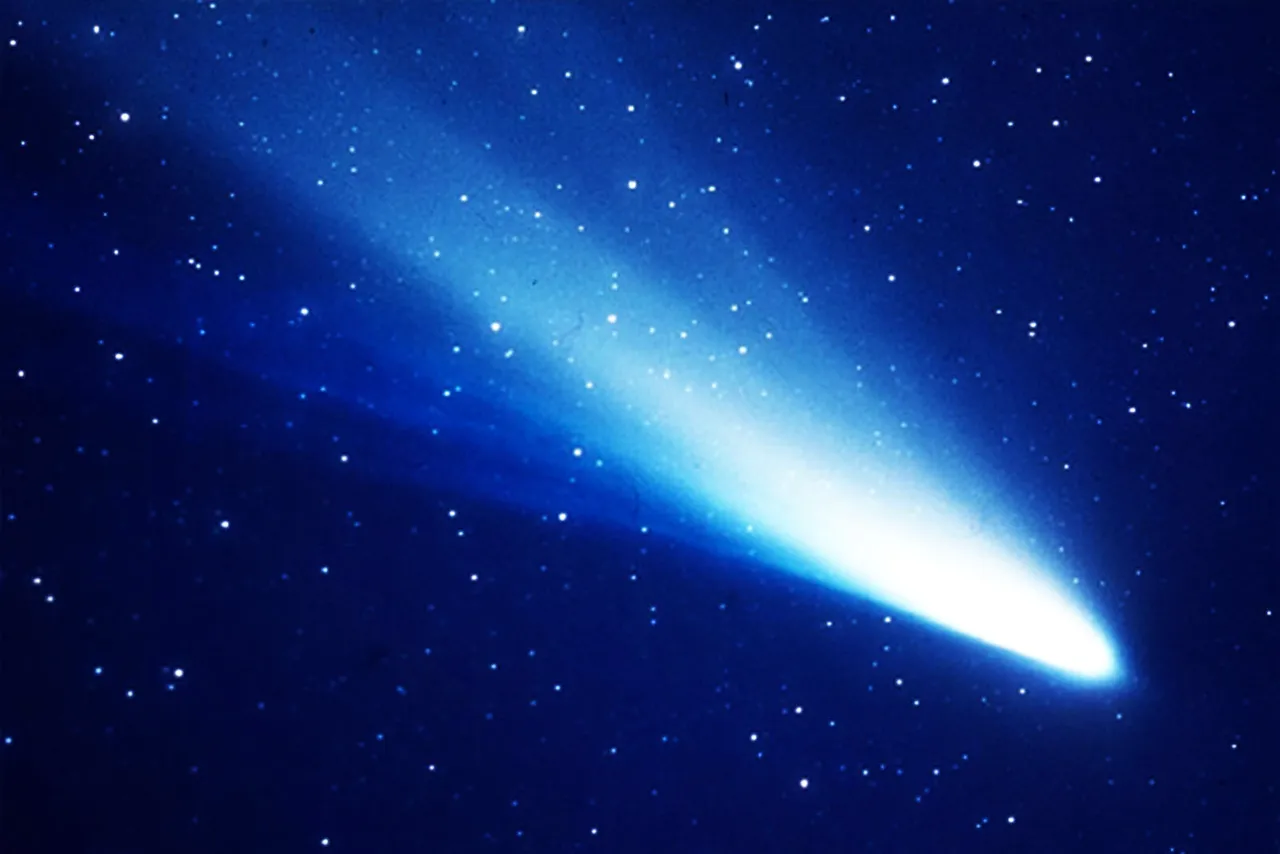
A comet is a small, icy body that orbits the Sun. Comets are composed of dust and frozen gases, such as water, methane, and ammonia. They are thought to originate from a region of the outer solar system known as the Oort Cloud, a vast reservoir of icy bodies that extends from about 2,000 to 100,000 astronomical units (AU) from the Sun.
When a comet approaches the inner solar system, the Sun's heat causes the comet's ices to vaporize, creating a bright tail of gas and dust that can be seen from Earth. This tail can sometimes be millions of miles long and can be visible for weeks or even months. Comets are often referred to as "dirty snowballs" because of their composition, which is a mixture of ice and rocky particles.
Comets have been known to impact planets and moons in the solar system, and some scientists believe that comets may have played a role in delivering water and organic molecules to Earth, which could have helped to seed the development of life.
Some famous comets include:
Halley's Comet: This comet is one of the most well-known and widely observed comets in history. It was visible in the sky in 1066 and returns to the inner solar system about every 76 years.
Hale-Bopp Comet: This comet was visible in the sky for a record 18 months in the late 1990s and was one of the brightest comets of the 20th century.
Comet Shoemaker-Levy 9: This comet was discovered in 1993 and was observed to break apart and impact Jupiter in 1994, creating a series of spectacular explosions in the planet's atmosphere.
Comets have been a source of fascination and wonder for people throughout history, and they continue to be an important area of study for astronomers today.
Anatomy of a Comet:
- Nucleus: At the heart lies the nucleus, a solid, icy body consisting of frozen water, methane, ammonia, and other frozen gases. Imagine this as the comet's "dirty snowball" core.
- Coma: As the comet approaches the sun, its icy surface heats up, releasing gas and dust that form a hazy envelope around the nucleus called the coma. Picture this as a glowing aura surrounding the core.
- Tail: The sun's radiation further ionizes and stretches the coma's dust and gas, creating two distinct tails. The dust tail trails directly behind the comet, reflecting sunlight, while the ion tail is made of charged particles and points directly away from the sun due to the solar wind.
Cometary Comings and Goings:
Comets come in two main varieties:
- Short-period comets: These celestial nomads have orbital periods of less than 200 years and frequently visit the inner solar system, like Halley's Comet, famous for its roughly 75-year appearances.
- Long-period comets: These deep-space explorers hail from the distant Oort Cloud, taking thousands, even millions of years to complete their orbits. They offer glimpses into the primordial solar system.
Why Comets Matter:
- Cosmic Archaeologists: These icy messengers carry frozen remnants of the early solar system, offering clues about its formation and the composition of other cosmic bodies.
- Spectacular Shows: When a comet approaches the sun closely, its coma and tail can become spectacularly visible, lighting up the night sky and showcasing the beauty of the cosmos.
- Potential Threats: Though rare, some comets on potential collision courses with Earth remind us of the dynamic nature of our solar system and the need for planetary defense strategies.
Comets vs Asteroids
In the cosmic dance of celestial bodies, comets and asteroids may seem like interchangeable players. However, beneath their dusty exteriors, they harbor distinct personalities. Here's a breakdown of their key differences:
Composition:
- Comets: Imagine dirty snowballs! Comets are icy concoctions, a mix of frozen gases like water vapor, methane, and ammonia, with a smattering of dust and rock.
- Asteroids: Think rocky leftovers. Asteroids are composed primarily of rock and metal, remnants of the solar system's formation that never quite coalesced into planets.
Appearance:
- Comets: When a comet gets close to the sun, its ice melts, releasing gas and dust that form a luminous coma and a spectacular tail, stretching millions of kilometers. Think of a celestial ponytail!
- Asteroids: These rocky bodies generally lack flashy tails or comas. They appear as points of light, often potato-shaped or irregular in form.
Orbit:
- Comets: These long-distance travelers come in two flavors. Short-period comets zip around the sun in less than 200 years, like Halley's Comet. Long-period comets venture from the distant Oort Cloud, taking millennia to complete their orbits.
- Asteroids: Most asteroids reside in the asteroid belt between Mars and Jupiter, following relatively circular paths around the sun. Some, however, have more eccentric orbits, occasionally crossing paths with Earth.
Uniqueness:
- Comets: Each comet is a unique cosmic fingerprint, its tail reflecting its composition and the angle of the sun's rays. They act as celestial time capsules, offering clues about the formation of the solar system.
- Asteroids: While diverse in size and composition, asteroids largely share a rocky makeup. They hold secrets about the early collisions and processes that shaped our solar system.
Impact on Earth:
- Comets: Though rare, large comets pose a potential threat to our planet if they collide with Earth. Smaller comet fragments, like meteors, can light up the night sky as shooting stars.
- Asteroids: Similar collision concerns exist with large asteroids, although proactive detection and deflection efforts are underway. Some asteroids, however, offer valuable resources like metals and minerals, sparking interest in asteroid mining.
